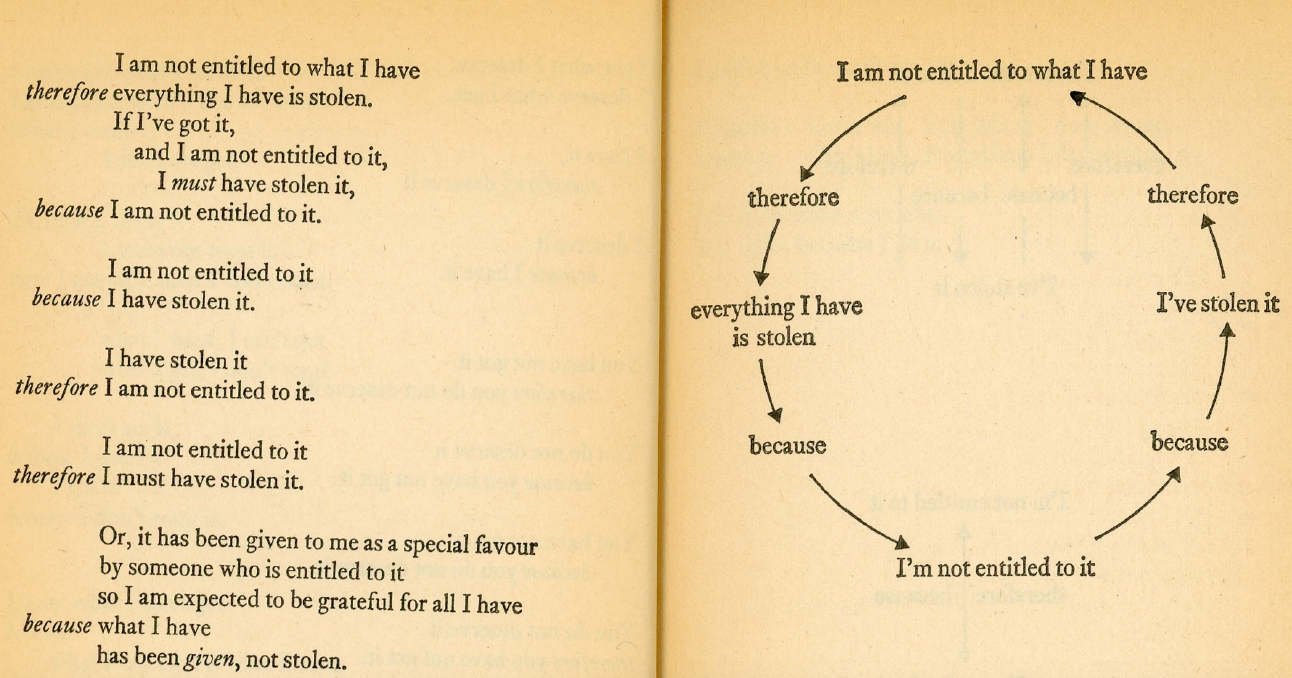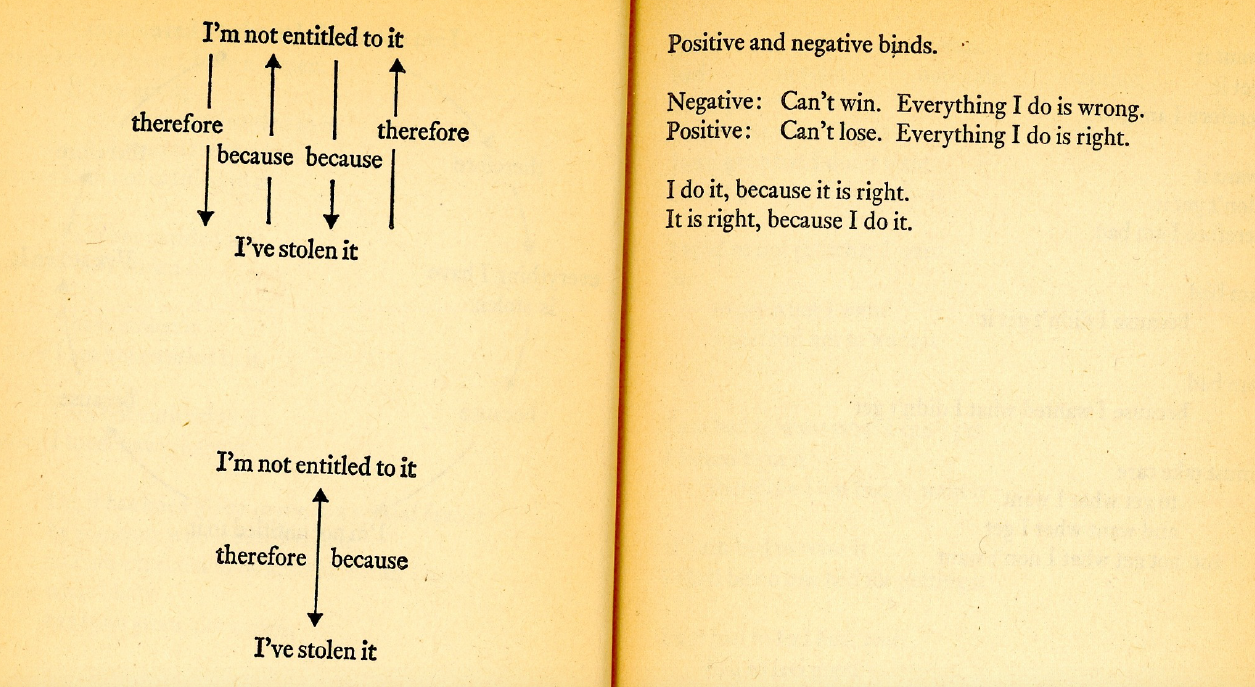Double Bind's Double life
They are playing a game. They are playing at
not playing a game. If I show them I see they
are I shall break the rules and they will
punish me.
I must play their game of not seeing I see
the game.
R.D Laing Knots I (1970)[1]
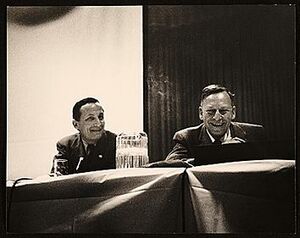
GREGORY BATESON - ART – THERAPY– ECOLOGY
To briefly recap: In the 1950s, John Cage, Robert Rauschenberg, and Allan Kaprow experimented with forms of artistic practice which encouraged an open systems approach. Drawing on ideas from cybernetics and information theory, they proposed a practice which blurred the division between art and life. These approaches influenced artists in the emerging counterculture in the mid 1960s. The artists’ commune USCO and the Merry Pranksters built totally immersive environments with events such as the Acid Tests and the Trips Festival, in which technologies of amplification and feedback served to create “organic” environments. We have also seen how Gregory Bateson’s work was influential to this culture, particularly to media activists Raindance and to the magazine for the emerging community of video users Radical Software. Lastly, we established that techniques from group therapy and “video therapy” initiated by Bateson's theories crossed into forms of artistic practice in which the fabulous loop de loop of the Portapak was essential.
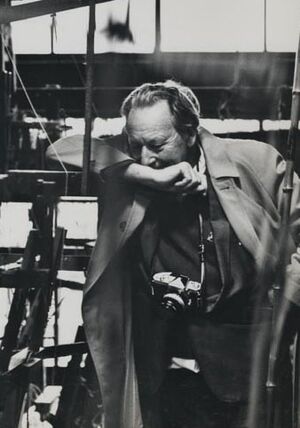
Gregory Bateson's influence on the counterculture had built over some years. Bateson had been a prominent voice in debates about art and society throughout the 1950s[2] which shifted emphasis away from the artistic product (the painting or sculpture) and toward the context in which such an object is created. Central to Bateson's cybernetic aesthetics was self-reflexivity (by the artist and the audience of art) as a condition of artistic production. In 1957 Bateson and Marcel Duchamp joined Frank Lloyd Wright and Mayer Shapiro at the American Federation of Arts Conference. It was here that Bateson outlined a (media) ecological understanding of art. Schipiro represented the old-guard, regarding painting's foremost virtue to be its fundamental opposition to mass media, a view which was opposed by Bateson and Duchamp.[3] Duchamp delivered his now famous paper The Creative Act[4] with Bateson presenting a text entitled Creative Imagination which was later published in Steps to an Ecology of Mind.
The 1957 conference was noteworthy because it attracted a much larger audience than expected and because there was an insistence from those presenting and the audience to discuss communication systems in relation to the arts. This was in the wake of an increased mass media presence and the discourse on cybernetics becoming widely accessible through (for instance) Norbert Wiener's books, a popularisation of Claude Shannon’s Information Theory, and as Bateson's own writing, including Communication and the Social Matrix of Psychiatry (with Jurgen Ruesch). Duchamp's paper sidesteps Schipiro's conservative position and holds the communicative and medial nature of art to be beyond the intention of the artist. The public decodes or “deciphers” the intentions of the artist and in so doing become creators of it.[5]
Bateson's paper is more assuredly cybernetic in nature. The Creative Imagination addresses the particular nature of artistic communication, which, as opposed to everyday communication, is a means of meta-level communication, art for Bateson is inherently self-reflexive, it communicates about communication. If Schipiro was interested in art as a form of resistance, or bulwark, to communication, a space immune from the perennial effects of communication, Bateson sees art as a play between different levels of communication, a play which makes those different levels visible.[6].
This position would be the central tenet of early video art and the media theory discussed in Radical Software and would be a formative influence on artists such as Dan Graham (profoundly influenced by Bateson and Radical Software). For Bateson, aesthetic awareness allows for an understanding of the process by which it is possible to acquire knowledge. This produces the grounds on which a communications system is framed to be made visible, which for a generation of artists in the 1960s and 70s situated art as an inherently self-reflexive, self-critical, and context-critical endeavour. For Bateson communication produces context and further reflection on the production of that context.[7]
This medial reading of aesthetics is in line with the valorization of creativity which was part of the post WWII's reinvention of the liberal subject: the self-reflexive self, constituted within media circuits (media-ecologies), with which Bateson and Ruesch's Communication and the Social Matrix of Psychiatry was concerned. Here the self is beyond the individual subjectivity of ‘I’, mind is “immanent in the larger system, man plus environment.” Communication is the “substance of common being”.[8] Central to Bateson’s understanding of art was a conception of aesthetics as a form of ‘deutero-learning’ which deals with “context and classes of context” (as opposed to proto-learning which deals with “narrow fact”).[9]
When artistic practice and discourse finally adopted ideas of self-reflexivity and radical mediality, in the late 1960s and early 1970s, Gregory Bateson's influence was apparent. Bateson’s vision of 'mind' as unbounded within a field of technological communication found resonance within the counterculture, by a generation who had been raised in “Media America” and had felt its alienating affects. Many had also experienced some dissolution of the essential self through exposure to hallucinogenics, which provided a model demonstration of a self which is medial and co-extensive. Gregory Bateson himself had been a participant in LSD experiments in the late 1950s. These were conducted in and around the Veterans Administration Hospital in Palo Alto, where Bateson was working on double bind communication. Bateson was introduced to the drug by an allergist named Harold Abramson. Abramson was one of the CIA's Technical Service Staff (TSS: Ph.D.s with operational experience) who was charged with recruiting artists and intellectuals into the experimental programme.[10] In 1959 Bateson helped arrange for his friend, the beat poet Allen Ginsberg, to take the drug as part of the same programme. (see chapter E-Meter).[11] A series of academic conferences about LSD were organised by The Josiah Macy, Jr. Foundation (also covertly funded by the CIA, which used the Macy Foundation as a main conduit for funding the MKULTRA programme).[12] Bateson did not find the experience of taking LSD life changing, however. He remarked to the organizer of the experiment, Joe Adams: “This stuff is all very well. It’s very pretty, but it’s trivial. […] It’s like the patterns of breaking waves or glass. What I see is only the planes of fracture, not the stuff itself . . . and what that stuff is, Joe, is quite another question.”[13]
THE DOUBLE-LIFE OF THE DOUBLE-BIND
Although Gregory Bateson would continue to be influential in the fields of psychoanalysis and psychiatry – particular in the fields of group therapy and video therapy – Bateson had always had an ambiguous relationship with psychoanalysis and psychiatry. In fact his position had always been oblique, first entering as an anthropologist of the overall system of psychiatry, and after that developing approaches which were out of the mainstream.
He left the field in 1962 to pursue research into octopus communication (Bateson held that octopus are capable of communicating abstractly). Following this, in 1962, Bateson joined John C. Lilly’s dolphin communication centre in the Virgin Islands and went on to continue this research in Hawaii.[14] Double-bind theory continued to be applied in practice as a diagnostic tool and continued to be applied within family-group therapy.
In 1977, returning to the subject of the double bind for the major psychiatric conference, Beyond the Double Bind [15] Bateson expressed regret that the double-bind had been taken so literally and was frustrated by the oversimplistic applications afforded to the double bind theory. He pointed out:
“Double bind communication […] was a class of behavior not behavior itself and therefore was not quantifiable.” […] “You cannot count the number of double binds in a sample of behavior, just as you could not count the number of jokes in a comedian’s spiel or the number of bats in an inkblot.”[16]
For Bateson the double-bind addressed epistemological questions which centred on the relationship between the name and that which is named; these elements are organised within a recursive structure, the double-bind is only useful insofar as it allows one to recognise that all communication is structured in this way.
Bateson:
“The matrix, after all, is an epistemology, and specifically it is a recursive epistemology; at the same time, it is an epistemology of recursiveness, an epistemology of how things look, how we are to understand them if they are recursive, returning all the time to bite their own tails and control their own beginnings.”[17]
In cybernetics feedback creates a homeostatic system, the particular outcomes of that system are not determined. This is how, within Bateson's cybernetic system, play and artistic expression are so important. Behaviour within these contexts is within a range of probability, but the system is not deterministic. Bateson’s approach to therapy reflected this, each session would be defined by the particular context, allowing for a performative response to particular circumstances. By 1977 Bateson was repelled by the idea that the double-bind could be a therapy which promised quantifiable results, at the Beyond the Double-Bind conference he stated: “I'm not very happy at feeling myself the father of the unsaid statement that 'double bind is a theory of therapy.' I do not think it is or was.” [18]
Despite Bateson’s protestations, throughout the 1960s the double-bind found its practitioners as a theory and as a therapy. In the late 1960s and early 1970s, video increasingly became the mediator within individual and group sessions and Bateson’s ideas remained central. Bateson's influence on the counterculture continued to grow, as a presence in Radical Software (as a media-ecologist) and as a key inspiration for Stewart Brand's Co-evolutionary Quarterly (1975).
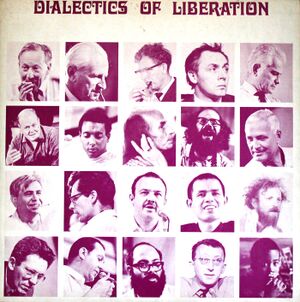
KNOTS AND WHIRLIGOGS
By the mid 1960s Bateson’s influence could be seen
- in the field of therapy – with an emphasis on group therapy and the double-bind
- in the field of aesthetics – with an emphasis on self-reflexivity, process and context specific forms of art
- within the counterculture – proposing a cybernetic epistemology and [media] ecology.
These influences are at times indirect and at other times explicit. All three strands converged in the pages of Radical Software, in which the tendency to understand video as a medium of self-knowledge, and knowledge of context, crossed into the counterculture with mercurial ease.
It was in the pages of Radical Software that video therapists Harry Wilmer and Milton Berger, artists Paul Ryan and Frank Gillette, and Bateson himself unified the fields of group therapy, aesthetic expression, and (media) ecology. The centrality of video as a technology of self-exploration found close proximity to an understanding of LSD as a technology of the self.
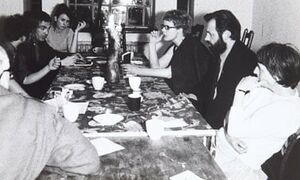
An earlier manifestation of the meeting of cybernetic readings of therapy, aesthetics and context-reflexivity was evident in the Dialectic of Liberation summit in London in 1967.

At the summit Bateson, who at the time was busy with dolphin research in Hawaii, delivered his paper, Conscious Purpose Versus Nature (discussed in the chapter Steps Toward a (Media) Ecology), and also prophesied ecological disaster would occur within the next thirty years unless a number of cumulative errors of thinking where corrected. Bateson cited a number of dangerous practices that needed to be reversed: Continuing to release CO2 into the atmosphere will cause the melting of the ice-cap (now known as “global warming” or “climate change”); the indiscriminate use of pesticides will destroy the fertility of soils, and unchecked population growth bodes ecological collapse Some of Bateson's fellow delegates at the summit found his address cryptic and oblique. To some, Bateson came across as a Cassandra figure, a harbinger of doom with no practical, actionable plans for change. “Liberation”, for Bateson, meant the liberation from the epistemological errors that had defined modern society and resulted in inflexibility of the overall system. If radical, it was an unfamiliar radicallity.[19]
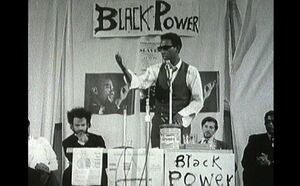
Despite Bateson's failure to communicate these urgencies, the summit serves as a point of permeability between radical practices in psychiatry, politics, models of community, and the countercultures of the 1960s.
The summit was convened by Dr. R.D. Laing, who a few years earlier, in 1965, had established Kingsley Hall in London. Kingsley Hall became the centre of what came to be known as the “anti-psychiatry” movement [20]– which sought to break down the hierarchy between staff and patients and opposed tendency for violent clinical intervention in mainstream psychiatry. Kingsley Hall had no locks on the doors, allowed people to come and go at leisure, involved patients in the day to day decision making process, did not prescribe (traditional) drugs– and, as such, became the testing ground for alternative ways of living that could extend beyond the walls of the institution.
Laing’s early research included what came to be known as the “rumpus room” experiment at Glasgow Royal Mental Hospital (1955).[21] Here eleven socially isolated chronic schizophrenics and two nursing staff were confined in a room every day over the course of one year. The staff were given no specific instructions about how they should interact or how they should conduct treatment. This experiment was conducted in a general context in which the management of the ward was very hierarchical and the contact between patients and staff was minimal. The experiment showed that more intimate contact with the patients meant that behaviour of the patients and the nursing staff changed. “The patients lost many of the features of chronic psychoses; they were less violent to each other and to the staff, they were less dishevelled, and their language ceased to be obscene.” [22]
The modality of the experiment indicated a move toward a more social psychiatry,[23] in which the hierarchies of traditional psychiatric treatment are replaced by more “bottom up” system of day-to-day management. The Glasgow study also revealed tensions between the structures of the institution and the less hierarchical practices modelled in the experiment. This suggested to Laing and others that an institution outside the traditional institution was desirable. The “Rumpus Room” experiment drew on cybernetic ideas, understanding the psychiatric process as adaptive, that all parties within the environment would change through the process. The task of the carer was to enter this process.
In 1965 Laing, now at the Tavistock Clinic, joined a group of colleagues[24] to form the charity the Philadelphia Association, which opened Kingsley Hall in East London. The aim of the Philadelphia Association was to create a model for non-vivisectionist, non-restraining therapies for people seriously affected by schizophrenia.
Laing had encountered Bateson’s ideas in the late 1950s and was attracted to the idea of the double bind and also to Bateson’s reading of psychosis as an adaptive, progressive process (a journey).[25] Laing visited Bateson and the double bind research group at Palo Alto in 1962.[26] Laing’s interpretation of the double-bind, however, was not so reliant on the theory of types as Bateson's.[27] Laing would rather emphasise that schizophrenia is a response to an impossible situation which arises within the system – the causation does not rest with the mother (as some understood) but is rather a distorted equilibrium within a given group. The task was to create an environment where a new equilibrium could be established.
Laing's book of poems Knots (1970) is composed entirely of double-bind situations which Laing describes as “knots, tangles, fankles, impasses, disjunctions, whirligogs, binds” [28] Laing acknowledges – with a nod to Bateson's application of the theory of logical types – that these could be rendered as “raw data” in a “logico-mathamatical calculus”[29] but instead of doing so, Laing breaks down the double binds so that they move from a personal dilemma (fankle or whirligog) into an abstracted diagrammatic representation of the bind in question. Laing often renders the same bind in different abstracted versions, to give a sense of how simple propositions could run along differing circuits of communication (or, simply put, how the same proposition can be configured differently). Here is an example of how one of Laing's "knots" is abstracted over the course of three pages (34, 35 and 36 of Knots):
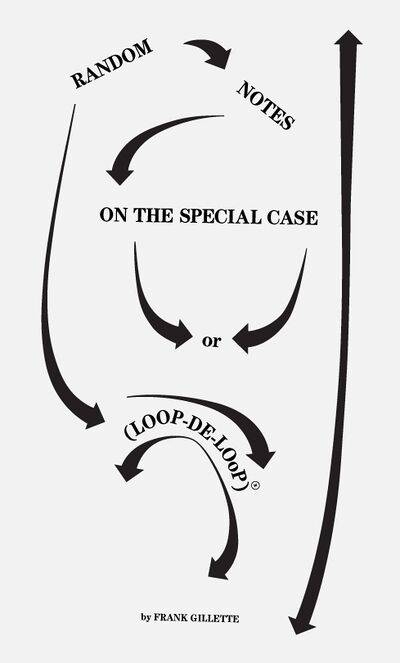
Here Laing constructs a series of fabulous loop de loops. The first image describes a circle, the second image snakes through a circuit, the third forms a ladder traveling up and down the proposition. With each iteration there is greater simplification – they become more abstract. Each new iteration moves further from the specific situation, and closer to the general structure of the knot (bind or whirligog). In this sense the knots resemble Alfred Korzybski's Structural Differential, as the reader is able to comprehend the different levels of abstraction (the map from the territory). Laing's knots are also equations which unknot the tangled subjective account and recreate it as a circuit. They are fragments of software and, in the sense that they describe a progressive order, they are algorithms.
The use of the diagram (in cybernetic terms) relates to the affordance of the model, as outlined by Kenneth Craik's The Nature of Explanation (1943) and Rosenblueth and Wiener's The Role of Models in Science (1945).[30] The model is anti-entropic, it allows news of order to leap across developmental stages (or even evolutionary stages). The model models something that does not yet exist. It is a model of difference and of potential.
The diagram also orders levels of abstraction or – as is the case with Frank Gillette's Random Notes on the Special Case or Loop de Loop, which headlines his article of the same name in Radical Software Issue 1[31] - the linear order of the words is flipped and looped. The arrows loop through the pages and reappear on the “feedback” section in the back of Issue 1 and weave forward in time into the pages of Issue 2. When one messes with the hierarchy in this way one becomes aware of the hierarchy. (In the discourse of cybernetics, as Lacan had noted in Seminar II, the letters take flight). These are, after all, random notes, their order is contingent, provisional. The reader must make their own, various, paths through the “random loop de loop”. And here again we arrive at a similar self-reflexivity as that engendered by Alfred Korzybski's Structural Differential: The reoccurring moment when we are reminded that the map is not the territory, the word is not the thing, words fly, they are links in a chain of difference.
- ↑ R.D Laing Knots p.1 Penguin 1971
- ↑ For instance, Bateson was a member of the Western Roundtable on Modern Art in San Francisco in 1949, which included Marcel Duchamp.
- ↑ William Kaizen, Steps to an Ecology of Communication: Radical Software, Dan Graham, and the Legacy of Gregory Bateson: Art Journal, Vol. 67, No. 3 (FALL 2008), pp. 86-107, p92
- ↑ M.Duchamp The Creative Act, ART-news Vol. 56, no. 4, 1957
- ↑ M.Duchamp The Creative Act, ART-news Vol. 56, no. 4, 1957
- ↑ Gregory Bateson The Creative Imagination Steps Towards an Ecology of Mind p
- ↑ William Kaizen, Steps to an Ecology of Communication: Radical Software, Dan Graham, and the Legacy of Gregory Bateson: Art Journal, Vol. 67, No. 3 (FALL 2008), pp. 86-107 pp. 93-94
- ↑ Bateson, in William Kaizen, Steps to an Ecology of Communication: Radical Software, Dan Graham, and the Legacy of Gregory Bateson: Art Journal, Vol. 67, No. 3 (FALL 2008), pp. 86-107, p94
- ↑ Bateson, Mind and Nature, 156
- ↑ The LSD research programme, which started in the mid 1950s, was very wide ranging, and was itself part of the CIA's covert MKULTRA programme.see: John Marks, The Search for the "Manchurian Candidate" The CIA and Mind Control, The Secret History of Behavioural Science, Penguin, 1979
- ↑ John Marks, The Search for the "Manchurian Candidate" The CIA and Mind Control, The Secret History of Behavioural Science, Penguin, 1979p. 120; Other participants in the programme included Ken Keasy and Stewart Brand, who went on to organise the multi-media Trips Festival in 1966. See Turner; From Counterculture to Cyberculture, University of Chicago Press, 2008; Note: Bateson, through his friendship with Alan Watts, also took an interest in Zen Buddhism as the model for a non-occidental, radically discentered, non-Cartesian philosophy Heims, Steve J.: Gregory Bateson and the Mathematicians: From Interdisciplinary Interaction To Societal Functions, Journal of the History of the Behavioral Sciences 13 ; 1977, 141-159
- ↑ John Marks, The Search for the "Manchurian Candidate" The CIA and Mind Control, The Secret History of Behavioural Science, Penguin, 1979 p.59
- ↑ Bateson cited in Peter Harries-Jones, Upside-Down Worlds p.93 |...|Note:The attitudes and practices of the 1960s counterculture were extended and re-coded into self-sufficient media ecologies as the 1970s approached, flowing through the output of media groups such as Raindance, TVTV (Top Value TeleVision), Ant Farm, The Woodstock Community Video and Videofreex. |...| David Joselit Feedback: Television Against Democracy, MIT Press 2007 |...| In the era of second-order cybernetics the emphasis was on experiments in technologies of self – re-programming the system, programming the community. In the 1970s the "access to tools" was still an essential concern, along with an insistence that media should be aid cultural cohesion. |...| Within this context the conflated term ‘media ecology’ was developed in the pages of Radical Software in the early 1970s. Arlo Raymond attempted a definition in issue 1. Media ecology was, for him:”the study of media and communications and its affect on media and society.”: Arlo Raymond, Media Ecology Radical Software Issue 1 In STEM, Bateson took a more radical position, within a media ecology there is no distinction among technology, affect, and sociability. (see Bateson STEM. 87)
- ↑ With a grant from the National Science Foundation Bateson studied the coding of analogic–nonverbal–signals in octopi. In 1962 Bateson took up a research position at John C. Lilly’s dolphin communication centre in the Virgin Islands. .See Lipsit p233
- ↑ Cited in Lipset: Beyond the Double-bind, New York City, which was sponsored by the South Beach Psychiatric Center, of Staten Island. Those attending included Gregory Bateson, Milton M. Berger, M.D, John Weakland, Murray Bowen M.D., and Carl A. Whitaker M.D., Albert E. Schefflin M.D., and Lyman C. Wynn M.D. Lipset p. p.294
- ↑ Cited in Lipset: Gregory Bateson: “The birth of a matrix or double bind and epistemology” in Beyond the Double Bind,p. 41.
- ↑ Cited in Lipset: Gregory Bateson: "The birth of a matrix or double bind and epistemology, " in Beyond the Double-Bind, p. 41.
- ↑ Cited in Lipset: J. Haley, “Ideas which handicap therapists,” in Beyond the Double Bind, pp. 65-80.
- ↑ Peter Harries-Jones A Recursive Vision, Ecological Understanding and Gregory Bateson p.30
- ↑ Andrew Pickering points out in the Cybernetic Brain p 438: “The term “antipsychiatry” seems to have been put into circulation by Laing’s colleague David Cooper in his book Psychiatry and Anti-psychiatry (1967), but Laing never described himself as an “antipsychiatrist.”
- ↑ Cameron, J. L., R. D. Laing, and A. McGhie (1955) “Patient and Nurse: Effects of Environmental Change in the Care of Chronic Schizophrenics,” Lancet, 266 (31 December), 13 84–86.
- ↑ In Pickering: Cameron, J. L., R. D. Laing, and A. McGhie (1955) “Patient and Nurse: Effects of Environmental Change in the Care of Chronic Schizophrenics,” Lancet, 266 (31 December), 13 84–86.
- ↑ see also David Cooper’s experimental psychiatric ward, Villa 21, at Shenley Hospital
- ↑ David Cooper, Joseph Berke, Aaron Esterson, writer Clancy Sigal
- ↑ Bateson writes “[...]it is worth mentioning that the great schizophrenic, John Perceval, observed a change in his “voices.” In the beginning of his psychosis they bullied him with “contradictory commands” (or as I would say, double binds), but later he began to recover when they offered him choice of clearly defined alternatives.” Narrative: A Patient's Account of His Psychosis, 1830-1832, by John Perceval. Edited and with an Introduction by Gregory Bateson, 1962.
- ↑ Lipsett p.238
- ↑ R. D. Laing “I use the phrase [double bind] less frequently now, because in Bateson's sense, it's got a very precise meaning and I think there is something to be said for allowing that precision to remain.” In, R.I. Evans. R. D. Laing: The Man and His Ideas, Dutton, New York (1976), p. 27
- ↑ R.D. Laing, Knots, Preface 1970
- ↑ Laing, Knots, Preface 1970
- ↑ Arturo Rosenblueth and Norbert Wiener, The Role of Models in Science, Philosophy of Science, Vol. 12, No. 4 (Oct., 1945)The University of Chicago Press
- ↑ Radical Software, Volume 1, Issue 1, 1970 p.6
